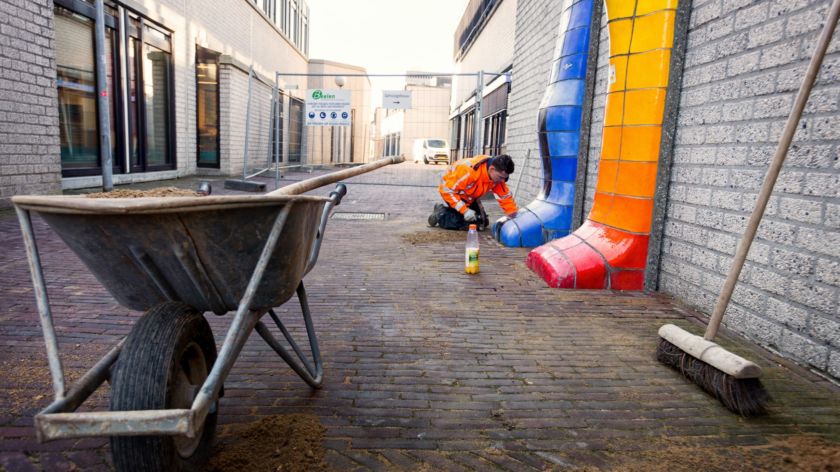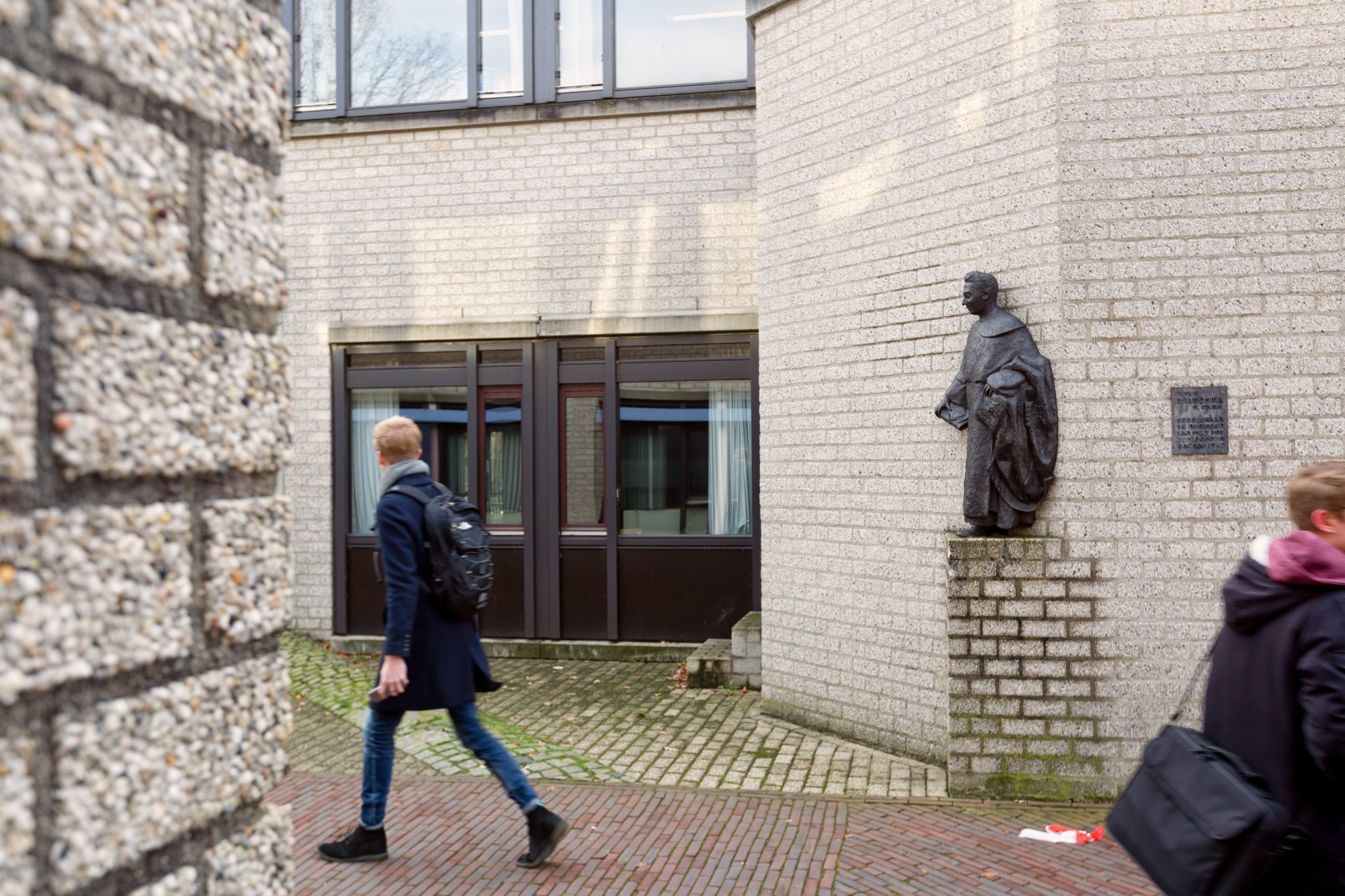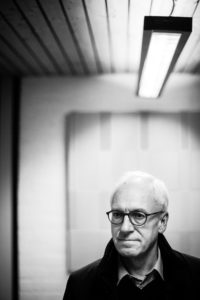Tear down the TvA and you destroy a work of art
-
 These works of art have been replaced. Photo: Dick van Aalst
These works of art have been replaced. Photo: Dick van Aalst
Pink doors, mint green radiators. Every detail was carefully designed. Few people know it, but the Thomas van Aquinostraat is one monumental work of art. Even the awnings above the entrances are part of the concept. The question is: will all this art disappear under the sledge hammer, or does it have a future as a new work or art, composed from its separate elements?
‘People today don’t see it anymore, but this street is one monumental work of art,’ explains Let Geerling. ‘It’s an amalgamation of art, architecture and environment.’ Geerling is art coordinator of Radboudumc and Radboud University, and specialises among other things in art in public spaces. She points to the cobblestones sticking out like molehills above the street; they were created by artist Jan Jacobs Mulder, as were the steel awnings above the entrances. Together with architect and fellow artist Berend Hendriks, Mulder drew up the design and concept of the Thomas van Aquinostraat.

Titus Brandsma
In 1976 the first spade hit the ground. According to Geerling this marked the birth of a stunning example of environmental art. This art form, radical at the time, embodied Piet Mondrian’s dream: art would become redundant as the whole world metamorphosed into one large piece of art. ‘This idea also underpinned the TvA,’ says Geerling, ‘even though few people nowadays see the art in it. In a culture devoted to image, what the TvA has to offer is no longer visible.’ She points to the sculpture of Titus Brandsma on the outside wall of TvA 3, designed by artist Father Gerard Mathot. ‘It’s lonelier than ever standing there by itself.’

Wouter Weijers, art historian at Radboud University, knows all the details of the streetscape and interior now only appreciated by art connoisseurs: the elevator doors gradually shifting in colour as you walk down the street, the ceiling beams displaying subtle colour shading, as do the radiators and lavatory doors. ‘It’s all been thought out in great detail. In my youth I followed lectures by the designer, Berend Hendriks.’
The set of 25 panels on the inside walls are also by Berend Hendriks. Weijers still gets sad when he thinks of one of Hendriks’ most beautiful pieces, destroyed during a renovation: the panelled dividing wall in the former socio-canteen in TvA 4: ‘A remarkable work, all gone now. I have no idea where it ended up.’ He emphasises that the dozens of colour nuances in the buildings retain their value, even if we walk by without noticing them. ‘It’s a portrait of an era, and as such worthy of our attention.’
Era
Let Geerling agrees with him. The TvA represents an era. The little street stands for the 1970s, a time of optimism, of sense of community and belonging, of the feeling that together we could make the world a better place. ‘You can see this clearly in the TvA, where ideals such as ‘open’ and ‘meeting’ play a key role in the design.’ Precisely because this time period was so important in the history of Radboud University, with student occupations and a fast growing group of students from ‘lower’ social circles, Geerling finds it important that the street retains its value. There’s no avoiding the sledge hammer now, but she believes the artworks offer a way to keep memory alive. But how?

Wouter Weijers says the preservation of environmental art is always a challenge: ‘Once the environment in which the art is embedded disappears, the works lose their context.’ It’s not an option to just move them elsewhere: they’ll become degraded to the level of ‘autonomous and transferable objects’. But he believes you can use these artworks to ‘give history a twist, thereby preserving it.’ Weijers suggests combining the objects into a new composition, making the former context of the TvA visible and valuable in our times. This is also Let Geerling’s wish. ‘I propose to hand over the objects to a new artist, with the assignment to use them to create a new story.’ Geerling is thinking of artist Saskia Noor van Imhoff for this special art assignment.
Meeting place
Geerling herself does not comment on the how and where of ‘the new composition of TvA artworks on campus.’ ‘This is precisely what we need an artist for.’ But the significance of such a composition is something she believes in strongly. ‘It can become a new meeting place, a space on campus that inspires people to talk about their environment, about our chosen path towards less stone and more greenery, as an invitation to breathe new life and meaning into the old TvA ideal.’
Will the TvA art get the new lease on life Weijers and Geerling hope for? The Executive Board still has to reach a decision on the matter. Geerling notes that environmental art is once again on the rise, as witnessed by the interest of the Netherlands Cultural Heritage Agency for works from the period 1965-1980. ‘All parties involved share a sense of urgency and challenge in wanting this plan to succeed,’ says Geerling. She emphasises what is at stake in this decision. ‘If we spread the artworks like loose elements across campus, without a narrative to link them, we will lose forever all that TvA stood for.’



